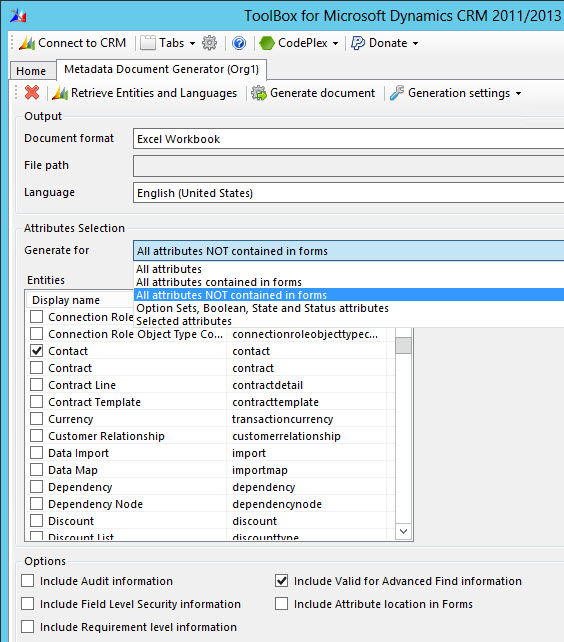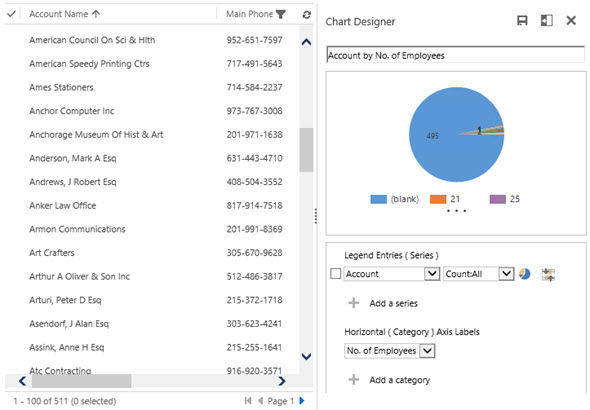Related sites:
Newsletter: Perspectives on Power Platform
Company: Niiranen Advisory Oy
CRM systems have a tendency to suffer from an increasing amount of entropy as time goes by. Not only does the rate of accurate information available from them decrease as data quality decays over time (especially if no one’s in charge of actively maintaining it), they’re also susceptible to a phenomenon I’d describe as “the illusion of having data”. This is the assumption that simply defining a data model that holds a place for specific attributes or entities would actually result in data being collected into them.
“Build it & they will come” could be translated to “customize it & they’ll use it” when it comes to CRM systems and it is as good a strategy in designing business information systems as it is in any other walks of life – meaning not very. Sure, during the initial requirements specification phase for a CRM system it may feel like there has to be a field added to the customer’s profile for every possible variable that the business may need in the future. After having used the system for a while you’re very likely to be confronted with the reality that very few if any of the records have any data entered into these fields. Or even worse: you just continue to assume to have customer information that doesn’t really exist, potentially building further process automation and reporting on a very shaky foundation.
 Since it’s quite a common phase in the lifecycle of a Dynamics CRM organization to sooner or later face a situation where you want to clean up the system from legacy data structures that no longer serve their purpose, I want to highlight a couple of tools that will help you on this journey towards a better organized CRM system.
Since it’s quite a common phase in the lifecycle of a Dynamics CRM organization to sooner or later face a situation where you want to clean up the system from legacy data structures that no longer serve their purpose, I want to highlight a couple of tools that will help you on this journey towards a better organized CRM system.
Persons who may get assigned the role of being the CRM system administrator alongside their “actual work” often approach the application as if it would consist of a set of forms that contain fields and… well, nothing much else. What this means in practice is that whenever a new business requirement comes up where additional information should be captured to serve a new process, product, organization structure or what have you, they’ll typically open either the account or contact entity and start adding new fields onto the forms.
As this process is repeated over and over again, the number of fields will grow and at some point some of the older ones will probably get removed from the form in an effort to make the system less cluttered. They’ll most likely be left in the system with their Searchable property still set to “Yes”, meaning using Advanced Find can become a nightmare with all the legacy fields listed. Also system views may still be using these fields that can no longer be edited. With the number of fields growing every day, it can simply become overwhelming to identify what’s in use and what’s not.
A good first step for finding the legacy data structures is to list the fields that are no longer used on any forms of the entity. Since Dynamics CRM by default does not offer tools for such analysis, the next place you should look for a solution is the community tools on CodePlex, starting from the nr. 1 toolkit for a CRM customizer, which is of course XrmToolBox. As it so happens, there’s yet again a tool in there that will help us in achieving our goal. The Metadata Document Generator offers a setting that allows us to export a list of attributes for the selected entities that are NOT contained in any of the forms (remember that there can be more than one per entity).

By choosing this setting and complementing it with the “include Valid for Advanced Find information” checkbox we can generate Excel sheets per each entity that list the unused fields, at least when it comes to the UI side of things.
Once we’ve spotted the fields that have potentially become redundant and we’d like to get rid off, the next question in our minds is likely to be how to verify whether there is any actual data stored in them that should be preserved. Similarly, just because a field is present on a form, that hardly proves that it would be populated for the records in the CRM database. These are the kind of questions that we can’t answer via metadata alone, instead we’ll have to dive into the actual data itself.
A quick way to examine the usage of specific fields without any custom tools or solutions is to use the built-in charts feature of Dynamics CRM. Let’s say we want to see if our users have actually entered data into the “No. of Exployees” field on the account form. By moving to a suitable view like “Active Accounts” (with a suitable filter to remain under the Aggregate Query Limit in terms of number of records), expanding the chart pane on the right side and clicking on the plus icon, we can start to define a new chart to help us in our ad-hoc data analysis needs. For the series we should choose a field that is populated for all of the records (I always use the record GUID field, meaning for the account entity I’d choose the “Account” field). In the category section we’ll then select the field on which we want to analyze the distribution of the data. While we can’t show exact percentages in the Dynamics CRM charts, the good ol’ pie chart visualization will quickly tell us the rough share of records with a “(blank)” value.

We don’t even need to save our charts to perform the analysis, since in many cases the live preview in the chart editor mode will already tell us how big a piece of the pie goes to blank values. By leaving our mouse cursor in the Category picklist and pressing the up/down arrows we can quickly scroll through different fields and view the distribution of values.
While this works for a reasonable amount of fields, it doesn’t necessarily produce a very good overview of the level of entropy in the CRM organization unless you write down these statistics manually onto an Excel sheet. To increase our performance in this task we can again look for a community provided tool to help us out.
Paul Way has created a solution that fits the bill perfectly: CRM Data Detective. By uploading this solution into our CRM organization and simply navigating to [YourCRMorg]/WebResources/way_/detective/detective.htm we can choose any entity in the system and have its database contents analyzed by the Detective. The end result will be a list you can quickly scroll through and view the bar chart for the population rate per each attribute:
This will be a great tool for you in the discussions with business decision makers who’ve originally demanded the fields to be added into the CRM data model. If you’ve got fields on an entity that have a 2% utilization rate, chances are your system would become more valuable by removing such fields. The overall usability of your CRM environment would increase and you also wouldn’t need to suffer from the illusion of having certain data available, just because someone had once created a place for it in the CRM data model.
there is also an interesting tool called CRM detective
http://crmdatadetective.codeplex.com/
Ben, that is precisely the tool I used in the last step…
Great summary. This is often a forgotten part of maintaining a system.
[…] >>Another way to identify the unused fields would be to leverage the Metadata Document Generator found in the free XrmToolbox solution on CodePlex. Here’s a blog post I wrote that includes this step: http://jukkaniiranen.com/sandbox/2014/03/spring-cleaning-dynamics-crm/ […]
http://crmdatadetective.codeplex.com/
Anyone needed to get this working in IFD deployment?
I’m struggling either using the IFD URL or the localhost when on the on-prem server.
Rob, from what I recall, I never managed to get the CRM Data Detective to load up on a pre-UR12 environment for CRM 2011, so this would be one thing to check. A quick trial on CRM Online with 2013 seemed to work ok, though.
If you need to produce a more extensive report of CRM field utilization rates, then Explorer! for Dynamics CRM by Mitch Milam would be one product worth looking into.
Thanks Jukka that would figure. I’m back on UR7 here so a little while longer.
I’ll take a look at Mitch’s link. Thanks for the heads up.
[…] Check out what fields you are no longer using in CRM 2013 Spring Cleaning for Your Dynamics CRM System […]
[…] Check out what fields you are no longer using in CRM 2013 Spring Cleaning for Your Dynamics CRM System […]
Hi Jukka,
Spring cleaning also bring to mind, the duplicate detection and the whole problem of missing popup in CRM 2013.
I have find workaround like theJim Latimer’s Codeplex but I am wondering the relevance with the arrival of UR2 and the possibility of disabling the auto-saved. Is it possible to bring forth the duplicate rule process as it was in CRM 2011 when the auto saved is disable? How much of the original process is still in place and how much will need to be reinvented? Since the bases are still in the system, is it still considered unsupported?
What are your thoughts on the subject?
Joan, have a look at the latest SDK’s section on Detect duplicate data:
“The Microsoft Dynamics CRM Online Spring ’14 and Microsoft Dynamics CRM 2013 Service Pack 1 bring back the capability to detect duplicates for the updated user interface (UI) entities, when you create or update a record using entity forms or grid views in the CRM web application. The entities must be enabled for duplicate detection. Also, new in Microsoft Dynamics CRM Online Spring ’14 and Microsoft Dynamics CRM 2013 Service Pack 1 is the capability to detect duplicates in CRM for tablets.”
So, it looks like the Spring update will indeed provide some more tools for spring cleaning 😉
[…] Spring Cleaning CRM 2013 […]
Good tips. Is there an “entity cleaner” around for CRM 2016? A tool I could select entities I don’t want anymore and would just do the work of deleting them all ? Doing this by hand is painful as I have to delete relationships between unwanted entities. Deleting relationships implies editing views, forms, fields, etc. It’s dauting…
Francis, I think you’ve identified the very reason why an entity level deletion service would be extremely tricky to implement. Due to all the dependencies that solution components can have, knowing what can be safely removed, or even understanding the implications beforehand, is something that a system customizer will need to assume responsibility of.
On the other hand, the mere existence of unused entities may not be such a big issue for system end users, as long as you adjust their security roles accordingly and hide away everything they’re not going need access to.
Do i have the option to find out which entities are used in the CRM? Thanks in Advance
Neremin, you could use Dynabacus from Sonoma Partners to get the record count per entity. If you need even more details then Explorer! for Dynamics CRM would be worth checking out.
Let’s say we identify the fields that are not used or rarely used. How could you possibly delete those fields in a situation where these fields were deployed using a managed solution? For example, production environment has only managed solution while development environment has unmanaged.
Yogesh, have you seen this article: How to Delete Component from Managed Solution in Dynamics CRM 2016?